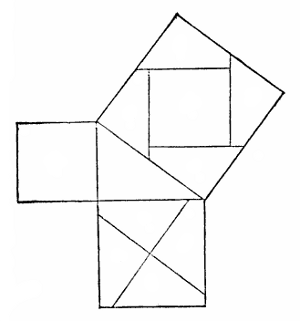 |
| source |
Suppose there are 5 pirates, P1, P2, P3, P4, P5, and they have 100 gold. They have strict social statues:
P1< P2 < P3 < P4 < P5
Their principle to share these gold is that: the pirate in the highest take up a way to share these gold, then all the pirate vote for the method. If the method the proposer will be killed. If the votes of agree and disagree is equal then the proposer have the right to decide.
So there three basic rules to make any decision:
1. Keep alive
2. Get gold as much as possible
3. Try to kill others
And all the pirate is clever enough. So if you are the proposer, P5. What will you do?
If you share most of the gold to the others and make yourself alive, clearly you are not a clever pirate.
It's hard to solve the problem in the normal way. So let's think about what will happen when only two pirates left,P1, P2.
Then P2 will give all 100 gold to himself for he can vote for himself and he is the proposer he can make the decision whether P1 agree or not. So the solution is:
(P2, P1)→(100,0)
If P1, P2, P3 left. P1 know if P3 is killed, then P2 will be the proposer, the situation above will happen and he will get nothing. P3 knows that too, so he just need to share 1 gold to P1 then P1 will support him.
Solution: (P3, P2, P1)→(99,0, 1)
It's the same for P4, P3, P2, P1 is the same: (P4, P3, P2, P1)→(99,0, 1, 0)
Well for P5, P4, P3, P2, P1 there is a little different, for P5 has to get another 2 votes. So the solution is (P5, P4, P3, P2, P1)→(98,0, 1, 0, 1)
Is that amazing that you just need to share a few gold and you can get support and get almost all the gold?
 |
| source |









.jpg/220px-Pentagram_and_human_body_(Agrippa).jpg)











.png)


